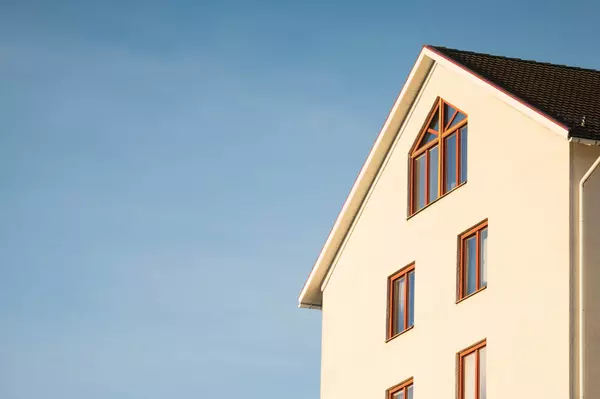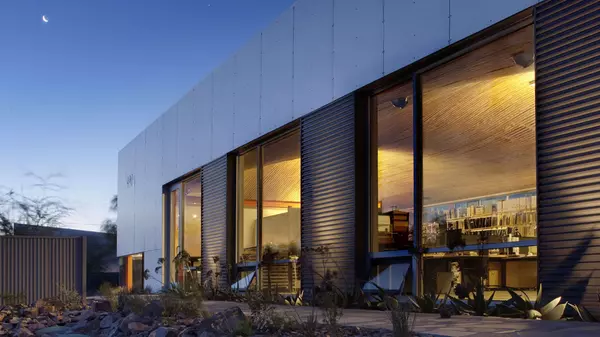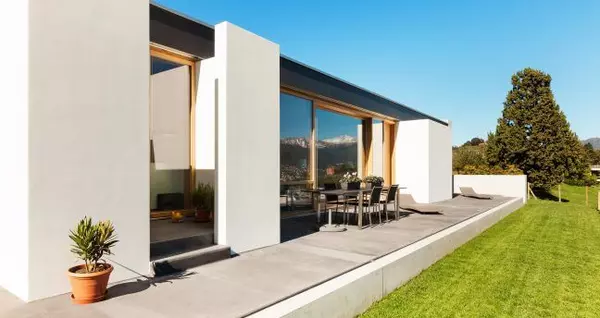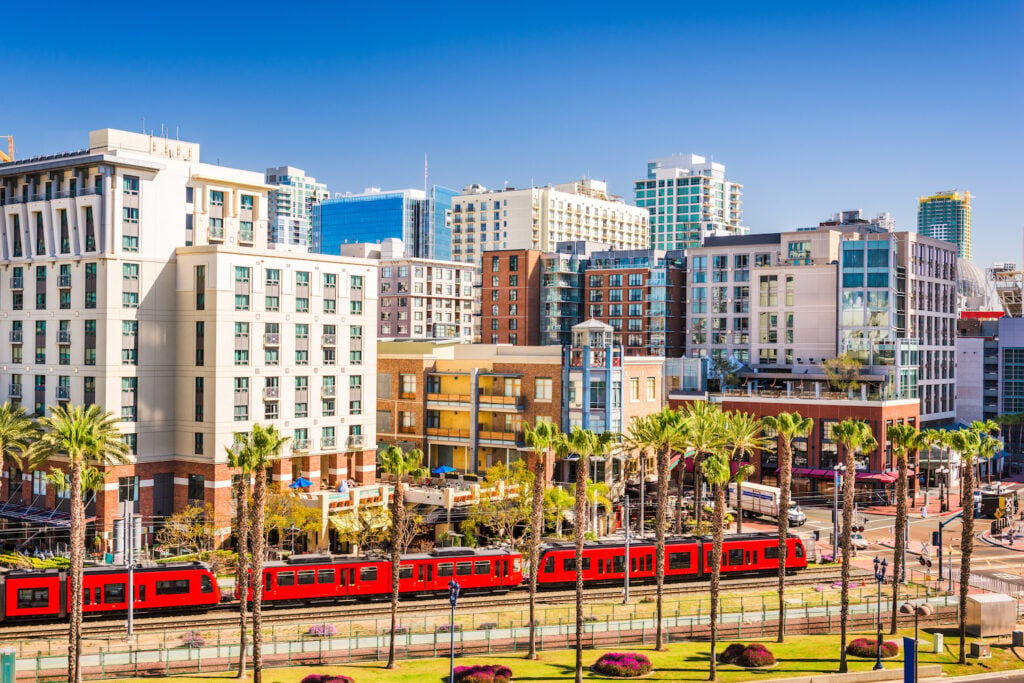Will smaller San Diego lot sizes solve housing woes? New study thinks so
Pro-housing advocates say reducing San Diego’s residential lot sizes could lower home prices, and increase tax revenue for the cash-strapped city.
A coalition of housing groups Friday morning said that denser developments are needed in America’s Finest City. They presented research from housing analysts London Moeder Advisors at a news conference in front of City Hall in downtown San Diego that they say supports their claims.
The proposal given to the City Council, ready-made for a potential ordinance, said tinier lot sizes would result in more homes where just one single-family home once sat.
Residents of new developments throughout the county, from Chula Vista to Santee, are used to having very little space between their homes and their neighbors, but that’s not always the case in San Diego. There is a 5,000-square-foot minimum lot requirement across more than 80% of the city — a rule that’s been on the books since 1923.
London Moeder Advisors, and its partners, said there should be no minimum lot size. Other parts of the nation have made similar changes, including Houston, Texas, which reduced its minimum lot sizes from 5,000 square feet to 1,400 square feet in 1998.
“This is San Diegans helping San Diegans,” said Ricardo Flores, executive director of affordable housing funder Local Initiatives Support Corporation. “Homeownership benefits all of us. It creates stronger and more stable neighborhoods, generational wealth and strengthens families.”
London Moeder Advisors provided examples to show the feasibility of its research: cost plans for townhouses or two- to three-story single-family homes, tax benefits to the city and appealing to communities by offering a lighter form of density.
Flores said Friday that their plan should be considered “light density” and is less disruptive than, say, an apartment going up on a residential street in San Carlos.
The coalition’s premise is that homes built on smaller lots will be less expensive than a traditional single-family home on a large lot.
While the group has only submitted the proposal to the city, there is no guarantee the City Council will consider it. Efforts to get a comment about the proposal on Friday from Mayor Todd Gloria’s office were unsuccessful.
In 2023, Gloria abandoned an unpopular plan to implement Senate Bill 10, which would have allowed a single-family home to be torn down and replaced with a new structure of up to three stories with up to 10 units in much of the city.
What are the tax benefits?

More homes in San Diego mean more property tax dollars for the city, the report says.
It estimates changing the zoning could bring in $10 million to $43 million per year for the city if 150 to 400 properties are developed. If homeowners and developers really take advantage and build 4,000 new properties in a year, it would be $430 million for the city.
“The best part of this is that families could own a home,” said Lori Holt Pfeiler, CEO of the local Building Industry Association, “(and) the city would generate more property tax.”
The report said its estimates of tax benefits are conservative and changing lot sizes has the potential to transform the tax base for decades. It leaves off other consequences that might factor in: More people living in the city means more sales tax revenue, but it also means more stress on existing infrastructure.
Nicole Lillie, executive director of the youth-led nonprofit Our Time to Act, said many of her fellow graduates have left San Diego because they can’t afford to live here, which means fewer taxpayers for the city. Also, she said most of her friends who stayed in San Diego are spending so much on rent that they aren’t spending money in the community.
“I have friends living in walk-in closets, on couches and in cars,” she said at the City Hall news conference.
There’s potential for more tax revenue from more housing, the report said, because most San Diego homes are on lots bigger than 5,000 square feet. The report looked at nine neighborhoods — Clairemont, College Area, Del Cerro, La Jolla, Linda Vista, Point Loma, San Carlos, Scripps Highlands and Scripps Ranch — and found the average single-family lot size was 7,636 square feet to 12,396 square feet.
What’s in the proposal?
There are two things in the proposal that could potentially calm neighborhood opposition: a parking requirement and no subsidized housing.
London Moeder Advisors said it doesn’t want to tell a developer or homeowner what to do on their lot, but it offers some suggestions.
To start, it says one of the most financially feasible plans would be to build a two- to three story single-family home without a backyard. This type of housing is common in Chula Vista’s Otay Ranch, which appeals to buyers who don’t want to live attached to neighbors (like in condos or townhouses).
In theory, the report says, developers could add two or three of these vertical single-family homes on a lot where one single-family lot exists. The proposal also said at least one parking spot should be required on the site — not street parking, which is increasingly hard to find across the city.
Additionally, London Moeder Advisors said the new homes should not include rent-controlled subsidized housing. Much of the state’s efforts to change single-family zoning has included stipulations that developers include subsidized housing in whatever they build, resulting in limited adoption. The firm says any requirement for subsidized housing would make the project financially unfeasible.
Many of the groups supporting this plan, such as Rise up Residential and YIGBY (Yes in God’s Backyard) San Diego, are some of the biggest proponents of more rent-controlled housing.
Categories
Recent Posts














